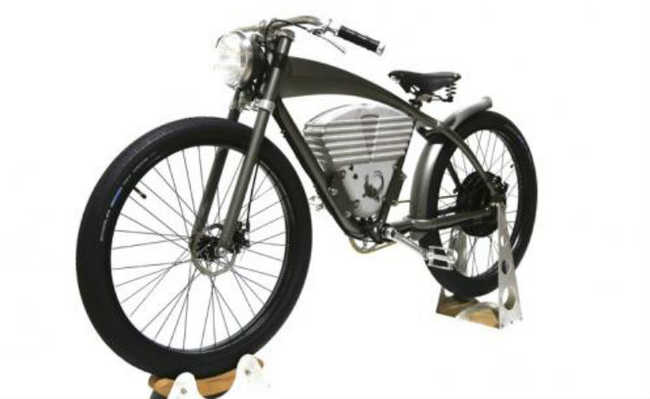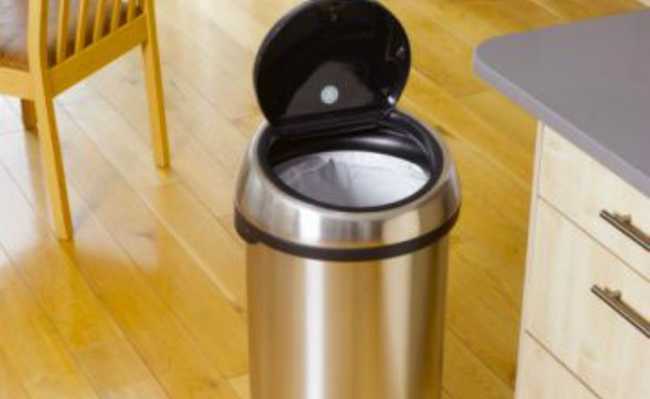Ask questions and learn how to do a detox fast
Diet based on natural fruit, leaf and vegetable juices brings benefits to the body. We separate recipes and tips for you to practice them safely and have a light footprint

Liquid-based fasts have become popular as a way to detoxify the body and restart physiological processes held up by an unhealthy diet or an innocent snack junk that we eat from time to time.
Right, but a lot of people have questions about it: do they work? Is it too much work to buy the ingredients? Are you hungry? Calm down, we have the answers for you.
Why try it?
Many people resort to this type of fasting as a quick fix to lose weight before the weekend on the coast, but that's not a good reason. Think of fasting as the gateway to a beneficial addiction (not least because juice fasting is a little expensive to do once); other than that it's a challenge, and if you're the type who likes to set goals for yourself, it's even better.
It's a small taste of the benefits of a green lifestyle. Many people notice increases in energy and vitality, and those who do it for two to three days in a row have a sharp appetite. But, of course, during the fasting period, you can only eat liquids.
Remember that it is always recommended to consult a nutritionist before starting to do it.
What to eat?
Basically, you will be eating fresh fruits and vegetables crushed in the food processor, and what you drink is the super nutritious pulp. Many fasts are just that, but depending on the duration and activities, a meal may be necessary (provided these foods are not processed). It is also recommended that, in addition to juices, six glasses of water at room temperature are ingested per fasting day.
How long to fast?
Time can range from two to 60 days! That's right, two months for the super experienced "marathoners". However, if you are entering this for the first time, it is very important to start small. The experience can be relatively intense and, depending on your lifestyle, it may not be possible to extend the practice. Interrupting your fast in the middle of the process is far worse than completing a smaller one. So, as a rule, a three-day fast is more than enough.
Starting on Friday and ending on Sunday is a good idea, as the schedule is more flexible.
It is worth remembering that it is always recommended to consult a nutritionist to find out if you can go through this type of fast.
You will need

The only equipment needed is a processor, which can be of any brand. In case you want the delicious smoothies and healthy juices are part of your routine, it's interesting to buy one of a more reputable brand, because sometimes cheap is expensive and, after you're addicted, you can have an abstinence crisis without your juicer and do something crazy. Remember that smaller models are not meant for constant use and may start to squeak after a short period of time.
What supplies are needed?
It's not complicated to shop at this time, as the possible combinations of flavors are numerous. A good choice are hard fruits and vegetables with plenty of water inside. Examples are carrots, apples, celery, celery, beets, ginger, oranges, lemons and foliage. Soft foods like bananas and avocados don't contain much water, which doesn't stop you from doing your adventures. Small fruits such as blackberries, herbs and vegetables of different types can be processed, and unusual combinations can surprise positively.
It is strongly recommended that, one week before starting this process, the consumption of alcohol, nicotine, caffeine, sugar, dairy products, cereals, meat, fish and eggs is reduced or even eliminated.
Making exotic recipes can be a good way to make the fasting experience more fun. if you are old school and not interested in innovations, we have recipes at the end of the article. There are also books and online sources on the topic.
It is always recommended to use organic, pesticide-free fruits and vegetables.
About energy and discomfort
The most common question, understandably, is: How am I going to feel?
In the long run, these fasts will help you feel better and feel more vital. In the short term, results can range from brisk to a little weak, depending on your body's condition. Therefore, it is always advisable to consult a nutritionist to find out if your body will not suffer consequences, in addition to always starting with a few days of fasting. Some good tips are also:
- Drink plenty of water;
- Maintain a steady calorie level;
- Do not overdo physical activities; moderate.
Daily routine
Incredibly, fasting is more work than eating, because you need to create combinations that sustain you all day, and you need to think about the final result when throwing the ingredients in the food processor. A good technique is to make a lot of juice first thing in the morning and store it in a small to medium sized jar (if it's large, the juice will spoil). The process may take some time and you will likely have to repeat it later in the afternoon.
For most people, the biggest challenge is keeping your calories at a steady level to avoid hunger and fatigue, which is possible with nine to 12 glasses of juice a day, so stock it up well and for the experience not weigh you down. in your pocket, use carrots and apples as the basis of most recipes, as they pay off a lot.
If you want to fast for more than three days (because you already have experience and know your limits), consider adding powdered supplements of your choice, to build up and provide the necessary nutrients. Some suggestions are:
- Chlorophyll (detoxifies the liver, helps absorb calcium, eliminates toxins, cleanses the intestine and strengthens the immune system);
- Cocoa (rich in amino acids, elevates good mood for being antidepressant, since hunger can make you angry);
- Royal jelly (has a good amount of proteins, lipids, vitamins and enzymes; it feeds and regenerates cells);
- Flaxseed (one of nature's greatest sources of omega 3 and omega 6, balances the intestinal flora);
- Amaranth (this one helps with weight loss, as it reduces abdominal swelling, does not contain gluten and has all the essential amino acids for the body);
- Quinoa (a source of carbohydrate with a low glycemic index, which does not require a lot of insulin production to be metabolized - that is, no fat that this excess hormone causes).
Of course, if you're interested in nourishing your system while detoxifying it, you can use these cute ones on your first or second day of fasting. Now, if you hardly know where to start, we on the team eCycle we have separated some recipes for you. Check it out:

apple juice with fruits
Small berries are an excellent source of vitamins C, E and minerals.
- 3 apples;
- 140 g of blackberry or cranberry juice (the famous foreign cranberry juice);
- 60 g of freshly picked or frozen blueberry;
- 1 tablespoon psyllium powder (a type of fiber such as that found in intestinal activators such as Metamucil® - can also be found under the name ispaghula and isapgol).
Make the apple juice first, then use it as a base for mixing all the other ingredients.
green pineapple juice
This juice helps to cool down on hot days, in addition to having nutritious properties.
- 200 g of pineapple;
- 100 g of broccoli;
- 100 g of cucumber;
- 1 kiwi.
Peel the fruit and make the juice. It's important to take it immediately after it's ready, because in addition to being green and oxidizing quickly, the vitamins are also lost over time.
Orange pineapple and chilli juice
This juice is rich in vitamin C and pineapple enzymes are great at dissolving mucus that can build up in the body. Chili pepper not only adds spice, but also speeds up metabolism.
- 220 g of carrots;
- 220 g of pineapple;
- Half lemon peeled;
- Half a small chili pepper.
Make a juice with the carrots, pineapple and lemon, then place in a blender or mixer along with the chilli pepper and some ice cubes.
pear and ginger juice
Pears are a mild laxative and celery acts as a diuretic. Ginger promotes good digestion.
- 140 g of pears;
- 85 g of celery;
- 2.5 cm of ginger.
Beat all ingredients, adding ice to get a creamy mixture.
Strawberry and tomato juice
This drink it's full of phytonutrients like lycopene, a proven anticancer.
- 200 g of strawberry;
- 2 to 3 tomatoes (400 g);
- Some basil leaves;
- Spicy lemonade.
Detoxifying Apples and Lemons
- 3 apples;
- Half a lemon;
- A yellow pepper;
- 16 cubic centimeters of ginger.
Drink it immediately after preparation.
Juice light footprint
This slimming recipe awakens the body, lowers blood pressure, aids digestion, slaps the immune system and eliminates toxins. In addition to helping you manage stress.
- Two oranges;
- Half a lemon;
- 100 g of beets;
- 100 g of spinach;
- 100 g of celery;
- 100 g of carrots;
- 16 cubic cm of ginger.
The amount of this recipe makes two large cups.
pink smoothie
Rich in vitamin C, the nutritious and tasty combination of apple and natural yoghurt is very good for the digestive tract.
- Two oranges;
- An apple;
- 85 g of fresh or frozen raspberries;
- 85 g of strawberry;
- 140 g of natural yoghurt.
Prepare the apple and orange juice, then add the other ingredients. Serve on time.
orange juice smoothie
Nutritious and rich in iron, calcium, beta carotene and potassium.
- One large size carrot;
- An orange;
- A banana or half avocado;
- A fresh or dehydrated apricot.
Make carrot and orange juice, then mix with banana, apricot and some ice cubes.
Joe's story
At 45 kilos overweight, which gave him an autoimmune disease, Joe Cross was, as the title of his documentary calls it, "Obese, Sick and on the Edge of Death" ("Fat, Sick & Nearly Dead", 2010).
The documentary chronicles Joe's journey towards regaining his health - more important than losing weight (we at the eCycle team do not advocate any body shape, but rather, we care about health first). After consulting doctors and taking conventional medicines, nothing worked. Joe then had the insight that the body always has the ability to heal itself. In a radical attitude, he hit the road with a juice processor and the promise of a 60-day diet (!) of fresh juices, like the ones mentioned here.
On a 4828km journey across the United States, interviewing people about lifestyle, it was at a truck stop that Joe met a man who has the same rare disease as him, Phil Staples. At 194 kg, Phil was morbidly obese and, seeing Joe on his pilgrimage, decided to seek health too. Feel like it? Well know that the documentary can be found on Netflix, Amazon, iTunes and also on YouTube. The DVD can also be purchased from the official website. The result of so much effort can be seen in the interviews that Joe gives:
Sources: Living Green Magazine and Juice Fasting Recipes for Weight Loss










